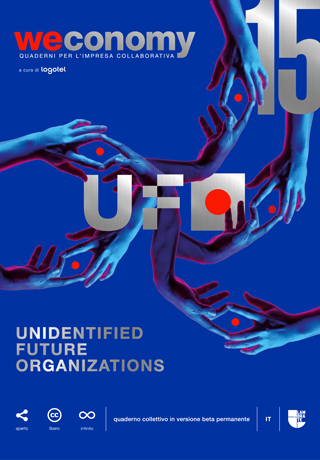A new generation of inclusive, relational and connective services
An in-depth look at which project drivers should be used to design new services for the post-pandemic.

An in-depth look at which project drivers should be used to design new services for the post-pandemic.

Con una velocità senza precedenti, la pandemia ha cambiato i nostri comportamenti. Ad anni di distanza – come designer – stiamo osservando come queste trasformazioni siano destinate a durare. Per poterle interpretare, è necessaria una nuova presa di coscienza. I nuovi modi di agire, in un contesto ormai mutato, hanno fatto emergere bisogni che richiedono nuovi scenari progettuali. Perché, inoltre, tutto è avvenuto in una fase in cui ci siamo sentiti tutti più fragili e in pericolo. A partire questi presupposti vale la pena ragionare per individuare alcuni driver che stanno dando forma a nuove dimensioni del servizio.
Il primo driver è funzionale. Riguarda nuove forme di flessibilità ed è un elemento abilitante. Se non è presente, il servizio è ormai inaccessibile.
Durante la fase acuta della pandemia, andava pianificato in anticipo come raggiungere gli ambienti di lavoro, di svago o di vendita. A tutti sarà capitato di fare una telefonata, cercare informazioni, scaricare app per prenotare qualcosa che fino a poco tempo prima era ad accesso libero. E da queste frustranti limitazioni sono emerse nuove potenzialità. I brand e le organizzazioni hanno offerto servizi di prenotazione per azzerare le code, oppure chat che – da casa – ci hanno messo in contatto con lo store assistant che ci avrebbe accolti in negozio. Forme di adattamento che, oggi, si stanno consolidando in nuovi modelli. E che non si limitano al digitale. Per esempio, i servizi drive-through degli ospedali, nati per garantire gli screening nella sicurezza dell’abitacolo della propria auto, hanno ispirato nuove forme di fruizione culturale, come l’esperienza “Boijmans Ahoy Drive-Thru” del museo Boijmans Van Beuningen di Rotterdam.
Il secondo driver è relazionale. Riguarda nuovi livelli di personalizzazione e di cura. È un fattore differenziante e orienta le scelte.
Molti servizi che, nel pre-pandemia, appartenevano alla fascia premium sono stati democratizzati. Per esempio, le consegne a domicilio o le consulenze personalizzate su appuntamento hanno esteso la propria portata. Non ci riferiamo solo al food delivery. È stato possibile avere a casa un servizio lavanderia (attraverso piattaforme come StirApp) e perfino test drive a domicilio. Questa dinamica non riguarda solo i grandi brand: ha trasformato anche il rapporto la prossimità. Infatti sono rinate attività di quartiere che, connettendosi al digitale, stanno acquisendo una nuova leva competitiva: permettono di raggiungere la casa delle persone più velocemente della grande distribuzione, stabilendo una relazione più forte rispetto ai concorrenti senza un territorio di appartenenza.
Il terzo driver è connettivo. Riguarda nuove forme di inclusione e di dialogo. È il fattore di sense making.
Organizzazioni e brand hanno sempre di più la necessità di entrare in contatto con reti di persone, ovunque si trovino. Tanto in luoghi fisici, quanto nel digitale. Per diffondere valori, cultura e stabilire una conversazione continua. È una forma di arricchimento, utile a far sentire le persone non solo clienti, ma parte di una comunità. I brand, quindi, hanno potenziato la propria offerta di contenuti per far scoprire e abilitare nuovi comportamenti. E non solo: se pensiamo al diffondersi di ambienti ibridi come la realtà aumentata o il metaverso, è diventato ancora più importante educare e raccontare il perché esistono questi nuovi punti di contatto. Ed ecco che stanno diventano sempre più frequenti eventi globali come l’Ikea Festival, appuntamento di 24 ore in cui il brand svedese ha offerto un’esperienza e una performance incentrate sul “vivere meglio in casa”.
C’è dell’altro. Con l’emergenza Covid-19 è stato messo in discussione il delicato equilibrio tra individui e comunità. Abbiamo riscoperto come le nostre abitudini d’acquisto e le nostre azioni impattano sulla collettività. Anche l’azione più piccola ha effetti su una scala più ampia, riverberandosi sull’intero pianeta. Questo vale per la nostra quotidianità, per l’organizzazione in cui crediamo e lavoriamo, ma anche per il nostro pianeta. Basti pensare a come i lockdown del 2020 abbiano ridotto l’impronta ecologica dell’uomo sulla Terra, spostando in avanti l’Earth Overshoot Day di circa 3 settimane. Un cambiamento temporaneo, certo. Ma che ha reso percepibile e misurabile un miglioramento possibile.
Ecco perché il quarto driver è trasversale. E riguarda gli impatti positivi.
La pandemia ci ha insegnato quanto sia importante il benessere individuale e collettivo. E quindi lavorare su una dimensione del servizio che contribuisca al miglioramento della società e dell’ambiente circostante. Oggi, infatti, per le persone non basta più acquistare qualcosa di utile/conveniente/appagante. È importante sapere come le proprie scelte contribuiscano in modo positivo al fragile ecosistema nel quale siamo immersi. È qualcosa che non può essere raggiunto solo con una promessa di servizio purpose-driven, vanno costruite alleanze e federazioni, che alimentano reti in cui i brand si prendono cura di tutto il ciclo di vita dei prodotti/servizi/piattaforme: dalla creazione on demand, fino a nuove forme di rigenerazione, come l’upcycling o il consumo collaborativo.

Published in Weconomy 15 – UFO. Unidentified future organizations
